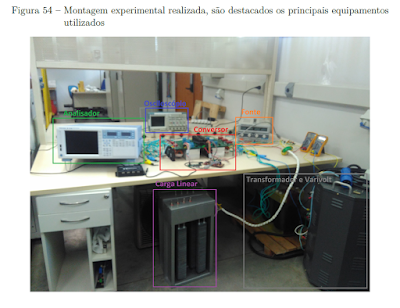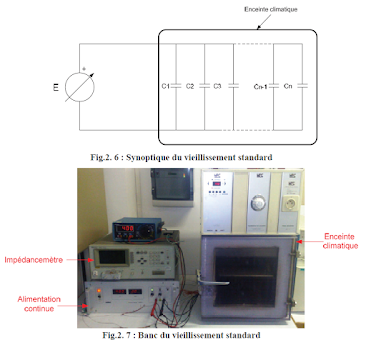Multi-powered UPS
KIM Jong Cheol
Department of Electrical Engineering
Graduate School, Chonnam National University
(Supervised by Professor PARK Sungjun)
(Abstract) As the society develops, load sensitive to power environment such as
medical equipment, communication equipment, FA (factory automation) system
and data center server is widely used, and reliability and stable supply of
power system becomes more important. In particular, electrical equipment
used for military purposes is not expected to have any problems in the power
supply system during exhibition or operation, so it is becoming necessary to
secure a reserve energy source, to duplicate the system or to make surplus
system. Even if the reliability of the power supply system is high,
momentary power failure due to an accident or a lightning can not be
avoided, and there is also a momentary voltage drop (Sag) or a voltage rise
(swell) of the power supply. Table 1 below is a definition of the power
anomaly phenomenon that appears in the commercial power source shown in
IEEE Std 1159TM-2009.
In case of power-sensitive load, it is necessary to prepare for system failure
because it can cause fatal damage even in short-term system failure.
Therefore, there is a need for an uninterruptible power supply (UPS) [1] [2]
to compensate for instantaneous voltage fluctuations as well as for blackout
situations.
Automotive UPS systems typically consist of a single module, such as a
battery, bi-directional inverter, high-speed switch, and the UPS module is
connected to the vehicle generator and critical loads. If the existing UPS
system is composed of a single power source and the UPS system is
composed of only one power source, it is difficult to cope with the demand of
the main load in the long term only by the output of the UPS when the
power source is out of power. To solve this problem, connecting several
power sources to a load leads to a large increase in cost due to the
connection of UPS to each power source. It is an off-line UPS system that is
commonly used. The advantage of the off-line method is that when the input
power is normal, there is less generation of electromagnetic waves and noise,
and the power consumption is low due to high energy efficiency. In addition,
it has a simple circuit configuration, high durability, low cost, and
miniaturization compared to on-line. The disadvantage of off-line is that
momentary power cut-off occurs in the case of power failure, and the output
changes according to the input voltage change during non-operation, making
it difficult to adjust the voltage and therefore it is not suitable for
high-precision load. In the case of Figure 1, it is composed of a single power
source, and if the UPS system consists of only one power source, it is
difficult to cope with the demand of the main load in the long term only by
the output of the UPS when the power source is outage. In particular, in a
system having a purpose for use in a command communication terminal of a
military, it is difficult to supply stable power because there are many
variables in power supply.
In this paper, we propose a multi - power applied UPS system that
eliminates the disadvantages of the parallel - connected power supply and has
a fast switching time. The UPS system operates in the battery charging
mode when the system is in normal operation and operates in the UPS mode,
which is the battery discharge mode, in the event of a system failure. In
such a mode switching, the follow up of the command voltage should be
performed within the shortest time. Since the UPS must supply the same
voltage to the load within 4ms in case of a system fault, the switching time
and return time must be short when controlling the output voltage and
current of the UPS, and the power failure detection time is also important. In
addition, since the main loads of the UPS system are mostly time-varying
and non-linear loads, it is also necessary to be able to control non-linear
loads. Conventionally, a proportional integral (PI) controller has been used as
a control method of such a UPS system. The PI controller has a very stable
output characteristic in the steady state, but it takes a long time to reach the
steady state at the time of mode change or load change due to slow
acceleration. Therefore, due to the limit of the transient response
characteristic of the controller, it is difficult to perform stable power supply
within a short time in the case of a system fault. Also, since the gain of the
PI controller affects the response characteristics, response characteristics may
be slow or overshoot may occur depending on the gain value selection of the
controller. Therefore, in this paper, to compensate the limitation of the
proportional integral controller, the controller using the DFT with fast
electrostatic sensing characteristics is applied. The control using DFT has an
advantage that it can perform fast power failure detection by comparing grid
voltage waveform and voltage waveform created by DFT using Schmitt
trigger. Therefore, stable power supply is possible when using only PI control
in mode switching in UPS system. The multi-power applied UPS system
proposed in this paper is finally designed to satisfy the following conditions.
In case of system fault, detection method using fast DFT is applied to the
electrostatic detection in order to supply stable power to the load in a shorter
time than the conventional PI control method. At this time, the switching
time of mode switching was set to be less than 4 ms, which is 1/4 of the
system cycle, according to KS C 4310 regulation of the uninterruptible power
supply in the industry standard council. A 10kW UPS system, in which
commercial voltage, vehicle generator, and auxiliary diesel generator can be
connected to the proposed switchgear, was tested and validated.
LINK1:http://www.riss.kr/search/detail/DetailView.do?p_mat_type=be54d9b8bc7cdb09&control_no=8f6a0e4c451565dbffe0bdc3ef48d419
LINK2:http://www.mediafire.com/file/0bg7thkijs1736t/MULTIPOWERED+UPS.pdf/file

























































 JOSIL ARTISTA PLASTICO FORTALEZA CEARA BRASIL AV.HERACLITO GRAÇA 41 TEL(85)32542378
JOSIL ARTISTA PLASTICO FORTALEZA CEARA BRASIL AV.HERACLITO GRAÇA 41 TEL(85)32542378
















